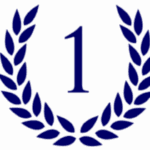
There’s a very specific sound students make when something finally clicks. It’s not quite a word, not quite a sentence, just a simple, drawn out….
“Ohhhh!”
Every tutor knows it. Every tutor waits for it and honestly? That tiny moment is one of the biggest rewards of the job.
It often comes after a long explanation, an attempt, a confused stare, a half finished sentence or three different diagrams drawn at slightly odd angles. Then suddenly there it is. Something shifts. Their eyes flick up. Their posture changes and you can practically see the idea land.
What’s funny is that the “Ohhhh!” rarely appears in the classroom with 30 other students. But in tutoring, where there’s no pressure to be quick or perfect, students give themselves the time and space to actually understand. That’s when the magic happens.
Sometimes the moment is small such as, “Ohhhh… I didn’t realise negative signs move when you solve the equation”.
Sometimes it’s dramatic such as, “Ohhhh! So that’s what Shakespeare meant. I thought he was just being dramatic”.
And sometimes it’s quietly triumphant such as, “Ohhhh… I get it now. I actually get it”.
Tutoring isn’t just about worksheets or grades, it’s about these little breakthroughs. Every “Ohhhh!” is proof that effort works, confidence grows and learning is actually happening beneath all the stress and self doubt students carry around.
It’s only a second, but it’s a powerful one and for tutors, that single second is enough to remind us exactly why we do what we do.
Isabella Naumovski









